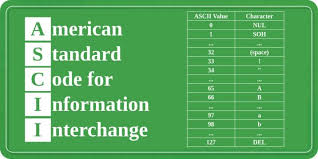Exploring the ASCII Code: Understanding ‘Alt 181’ and Beyond
The world of computing is filled with numerous codes and characters that make digital communication possible. One such code is the ASCII (American Standard Code for Information Interchange) code, which plays a vital role in representing text in computers and other devices. Among the many characters in the ASCII table, ‘Alt 181’ is particularly interesting. In this article, we will explore the ASCII code, the significance of ‘Alt 181’, and how to use it effectively.
What is ASCII?
ASCII is a character encoding standard used to represent text in computers and other electronic devices that use text. Developed in the early 1960s, ASCII codes are used to map characters to specific numerical values, making it easier for computers to understand and display text. The standard ASCII table includes 128 characters, which encompass letters, digits, punctuation marks, and control characters.
Understanding ‘Alt 181’: The Á Character
The specific ASCII code for ‘Alt 181’ corresponds to the capital letter A with an acute accent, represented as ‘Á’. This character is part of the extended ASCII table, which includes additional characters beyond the standard 128.
Here’s how to input the ‘Á’ character using the ‘Alt’ key and its ASCII code:
- Press the “Alt” key: Hold down the “Alt” key on your keyboard.
- Type the number “181”: While holding the “Alt” key, type the number “181” on the numeric keypad (make sure Num Lock is enabled).
By following these steps, you will generate the ‘Á’ character (A with an acute accent) in your text.
The Significance of Extended ASCII Codes
While the standard ASCII table contains 128 characters, the extended ASCII table expands this to 256 characters, allowing for the inclusion of additional symbols, diacritical marks, and special characters. This extension is particularly useful for representing characters in various languages that are not covered by the standard ASCII set.
The ‘Á’ character, for example, is used in several languages, including Spanish, Portuguese, and Hungarian. It plays a crucial role in correctly representing words and names in these languages, ensuring accurate communication and text representation.
Applications of ASCII Codes
ASCII codes are used in various applications and fields, including:
- Programming: Programmers often use ASCII codes to handle text and characters in software development. Understanding ASCII codes can help in debugging and manipulating text data.
- Data Transmission: ASCII codes are fundamental in data transmission protocols, ensuring that text is correctly encoded and decoded between systems.
- Text Processing: Text editors, word processors, and other text-processing software rely on ASCII codes to manage and display text.
- Digital Communication: Email systems, web pages, and other digital communication platforms use ASCII codes to ensure proper text representation across different devices and platforms.
Challenges and Limitations
While ASCII is a widely used standard, it has some limitations, particularly when it comes to representing characters from non-Latin alphabets. Languages such as Chinese, Japanese, and Arabic require more complex encoding systems, such as Unicode, which can represent a much broader range of characters.
Conclusion
ASCII codes, including the extended characters like ‘Alt 181’ (Á), are foundational elements of digital text representation. They enable computers to process, display, and transmit text accurately, facilitating communication in multiple languages. Understanding ASCII and its applications is essential for anyone involved in computing, programming, or digital communication. As technology continues to evolve, the importance of these encoding standards remains critical in ensuring seamless and accurate text representation across the digital world.




